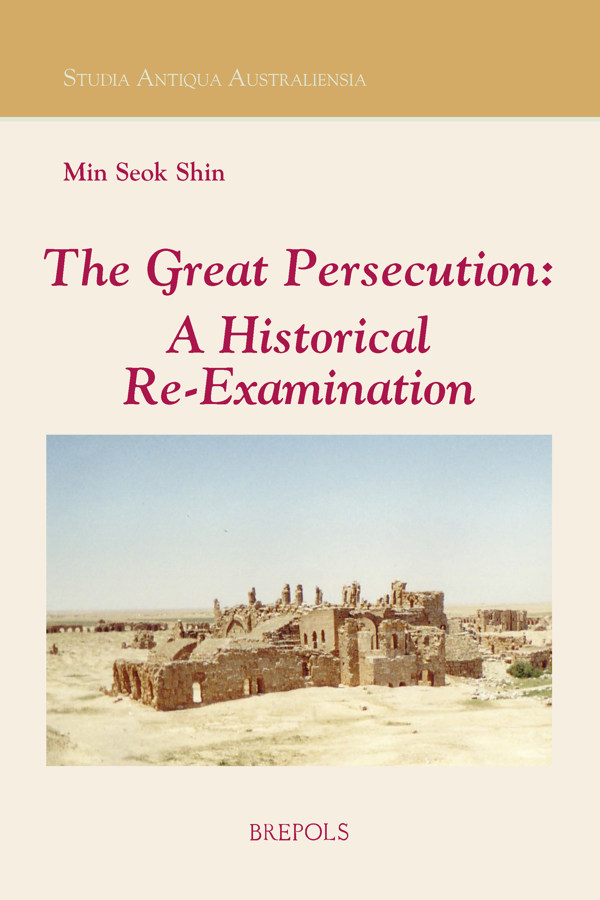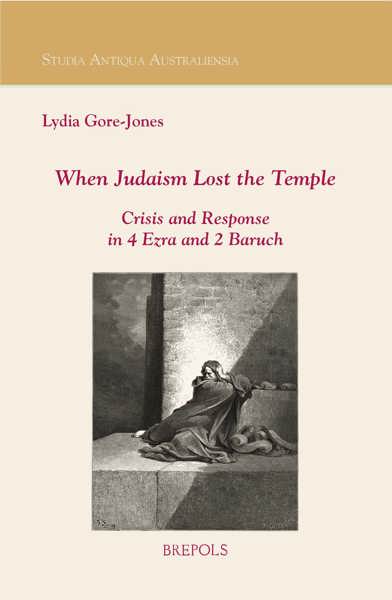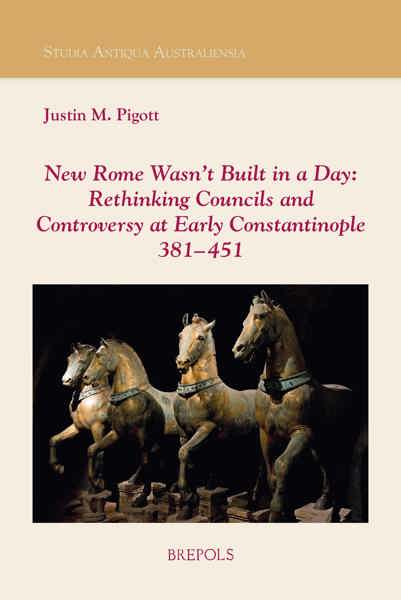
The Great Persecution: A Historical Re-Examination
Min Seok Shin
- Pages: xii + 280 p.
- Size:156 x 234 mm
- Illustrations:5 b/w, 5 tables b/w.
- Language(s):English
- Publication Year:2019
- € 60,00 EXCL. VAT RETAIL PRICE
- ISBN: 978-2-503-57447-9
- Paperback
- Available
A new exploration of the Great Persecution
"Shin deserves credit for publishing the most comprehensive recent study of such a consequential event, certainly in English. Research libraries and specialists in Christianity in the later third and early fourth centuries will find this volume worth acquiring.” (David J. DeVore, in Bryn Mawr Classical Review, 21.08.2020)
« (…) il faut reconnaître à l’auteur le mérite d’avoir proposé une synthèse nouvelle à défaut d’être neuve sur un événement aussi fondamental dans l’histoire du christianisme ancien que la grande persécution de Dioclétien. » (Sylvain Destephen, dans Revue des Études Anciennes, 123/1, 2021, p. 339)
Dr. Min Seok Shin teaches church history in the Sydney College of Divinity (Korean School of Theology). He completed his first degree at Kosin University in 2002. At Macquarie University, in Sydney, he gained an MA in Early Christian and Jewish Studies in 2006, and a PhD in Ancient History in 2014.
The Great Persecution under Diocletian and his imperial colleagues and successors is a foremost concern of modern scholarship on Roman persecution of Christians.
This book is a systematic and comprehensive study of that persecution. Its focus is on events from 284 when Diocletian became emperor, to 313, when full religious liberty was granted to all religions by the so-called Edict of Milan.
At least nine imperial orders were issued in 303 to 312 against Christianity. While Diocletian’s orders were more concerned with the privileged upper classes of Christians, Maximinus Daia’s orders were aimed at isolating all Christians from the Roman community.
The enforcement of the imperial orders, and the sufferings of Christians under them, are examined on a diocese-by-diocese basis, comparing the situation in the West and in the East.
In the late fourth century, Prudentius of Calahorra, poet and imperial official, complained about the loss of records on local martyrs, exclaiming, ‘Alas for what is forgotten and lost to knowledge in the silence of the olden time! We are denied the facts about these matters, the very tradition is destroyed.’
This book draws together the remains of what Prudentius feared was forgotten for ever.
PREFACE & ACKNOWLEDGEMENTS
LIST OF ABBREVIATIONS
TABLES AND MAP
FIGURES
INTRODUCTION
1. Approach and scope of the book
2. Hagiographical documents (and martyr-acts) as historical sources or not?
CHAPTER ONE. CHRISTIANS AND THE IMPERIAL GOVERNMENT UP TO THE GREAT PERSECUTION
1. The intellectual background of the latter part of the third century
2. The rapid expansion of Christianity from AD 260 to 303
3. Martyrdom in the Roman army
4. Diocletian’s restoration of the Roman traditional virtues: innovation and restoration
5. Summary
CHAPTER TWO. THE PERSECUTIONS BETWEEN 303 AND 313
1. The reconstruction of imperial documents issued against Christians
2. The enforcement of imperial orders and martyrdoms of Christians in the Roman empire
3. The persecution of Christians under Tiridates III, King of Armenia
4. Summary
CHAPTER THREE. THE END OF THE PERSECUTION
1. Impeiral proclamations ordering the end of the persecution
2. Licinius’ reviving of the persecution of Christians in 321/4 and its end
3. Summary
CONCLUSION APPENDICES
1. A list of martyrs in Eusebius’s De Martyribus Palaestinae in chronological order
2. A list of name-identified martyrs during the Great Persecution on a diocese-by-diocese basis
3. A list of martyr acts and hagiographical texts and their editions used in this book
BIBLIOGRAPHY




